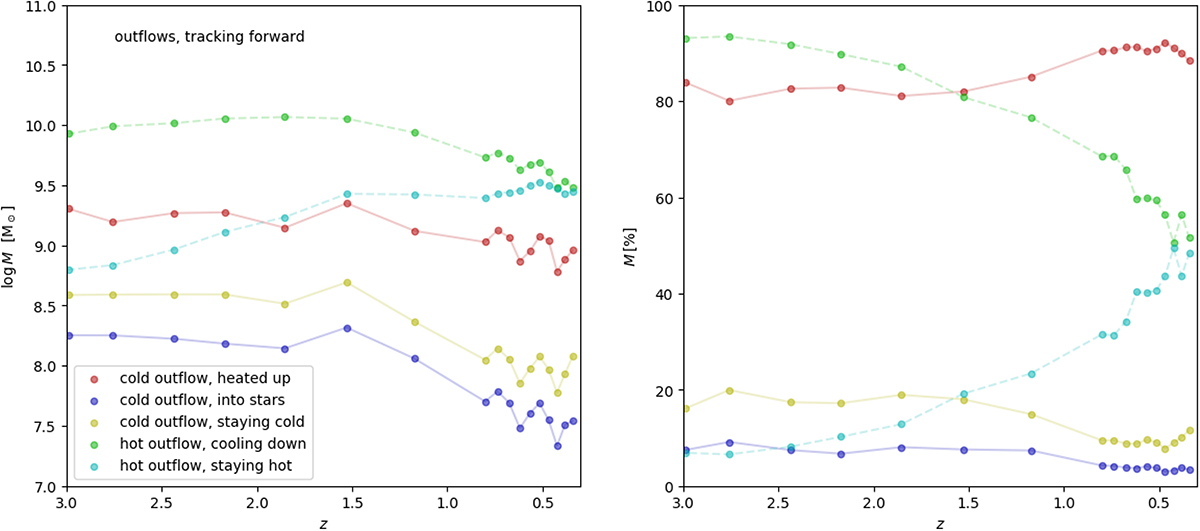Fig. 12.

Download original image
Evolution of outflowing gas at different redshifts. For each snapshot at a given redshift z, outflowing gas particles are tracked forward in time. For cold gas particles (solid lines), the tracking is stopped when they are heated above T = 3 × 104 K (“heated up”) or form stars (“into stars”), while particles not undergoing either outcome at z = 0.3 are labeled “staying cold.” Similarly, the tracking of hot particles (dashed lines) is stopped if they cool down or form stars, so that the possible outcomes are “cooling down,” “into stars,” or otherwise “staying hot” (although a hot gas particle needs to become cold before being eligible for star formation). Left: total mass of the gas in each outcome. Right: fraction of the gas mass in each outcome, with respect to the initial cold outflow mass for heated up, into stars, and staying cold outcomes, and with respect to the initial hot outflow mass for cooling down and staying hot outcomes.
Current usage metrics show cumulative count of Article Views (full-text article views including HTML views, PDF and ePub downloads, according to the available data) and Abstracts Views on Vision4Press platform.
Data correspond to usage on the plateform after 2015. The current usage metrics is available 48-96 hours after online publication and is updated daily on week days.
Initial download of the metrics may take a while.


